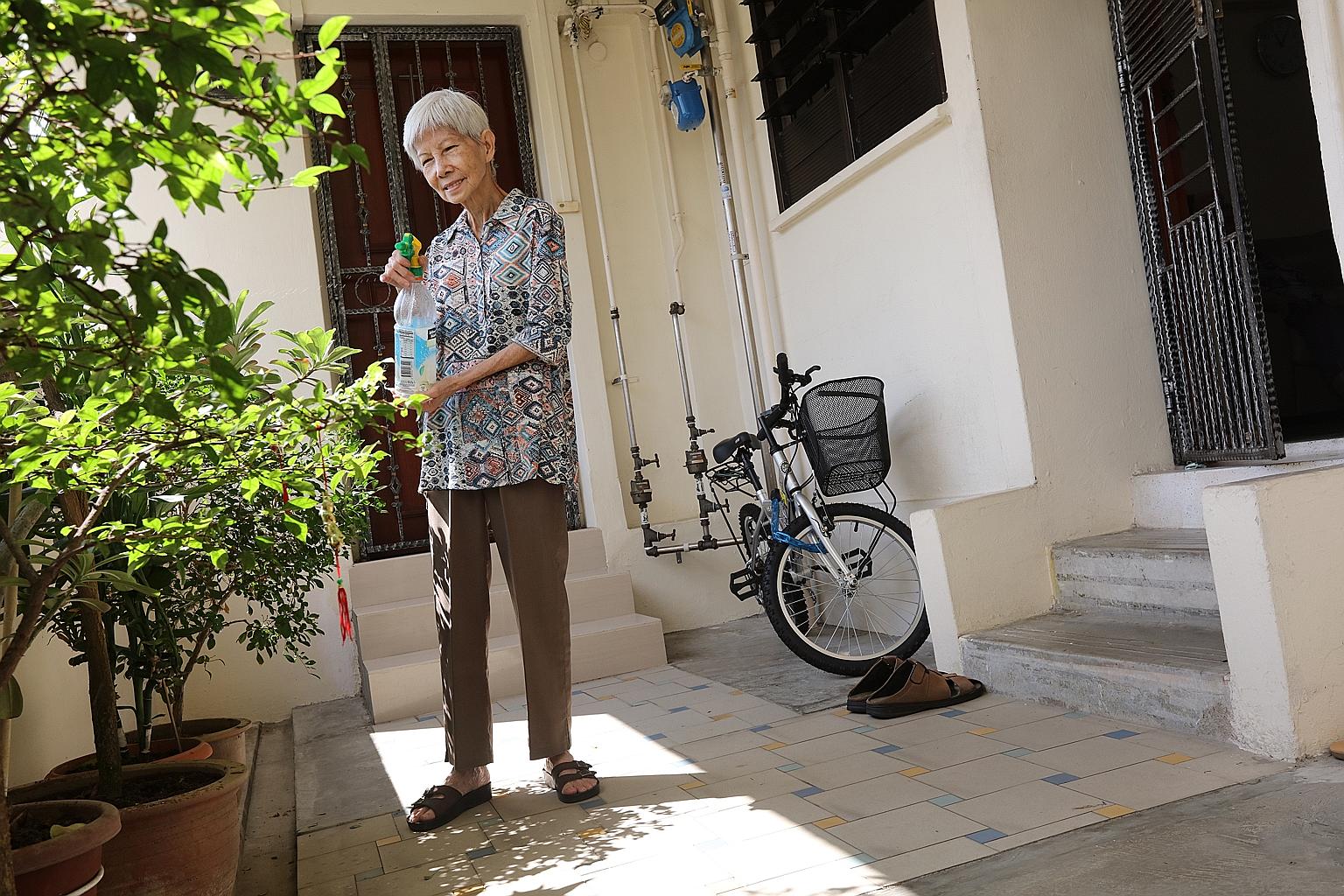A few steps? HDB to make homes more elderly-friendly
Sign up now: Get ST's newsletters delivered to your inbox

Madam Low Sok Chin, 70, is concerned that the two steps separating her three-room HDB flat from the corridor may make it difficult to take her husband, who suffered a stroke last month, out for his medical appointments. "It is comforting to know that there are options for ramps if we need it, and that there will be subsidies," she said.
PHOTO: DON WONG FOR THE STRAITS TIMES
Follow topic:
Older residents who have to climb a small flight of steps to get into their Housing Board flat may soon have one less obstacle to overcome.
The Housing Board plans to expand its Enhancement for Active Seniors (Ease) programme to include subsidies for ramps more than one step high, National Development Minister Lawrence Wong said yesterday.
The goal is to make HDB estates more elderly-friendly, given the ageing population, he told reporters after visiting Nee Soon GRC's Kebun Baru ward. "You'll see more of these needs emerging - mobility, access, connectivity but also community. You want (the elderly) to stay active," he said, adding that expanding Ease is one way to help seniors.
The scheme, launched in 2012, has subsidised about 90,000 households to fit their flats with elderly- friendly features such as grab bars and slip-resistant treatment for toilet tiles. Eligible home owners - those with an elderly household member aged 65 and above, or 60 to 64 years old for those who require assistance in daily living - pay only a small part of the cost.
Currently, only ramps that can overcome a one-level difference within the flat or at its entrance are subsidised. This is because ramps that cover two to three steps may be put at too steep an incline to be useful, or end up obstructing the common corridor, said Mr Wong.
But the Housing Board has been looking for space-efficient solutions that would not cost residents too much money or time to maintain, the minister added.
"Once we have identified a good solution, we hope to expand the Ease programme so that more residents can benefit," he said. "I hope it can be done as soon as possible."
The multi-step entrance was a feature of some flats built in the 1970s and 1980s to give residents a greater sense of security and privacy.
Yesterday, Mr Wong visited one of them, retired cleaner Low Sok Chin, 70. Madam Low was concerned that the two steps separating her three-room HDB flat from the corridor may make it difficult to take her husband out for his medical appointments.
Last month, her husband, Mr Teo Ah Koon, 78, suffered a stroke that left him unable to speak, swallow and walk. He is still hospitalised.
She said in Mandarin: "I will have to wait till my husband comes home to see what the situation is, but it is comforting to know that there are options for ramps if we need it, and that there will be subsidies."
Besides visiting Madam Low, Mr Wong, who was joined by the ward's MP Henry Kwek, met low-income families who are part of a grassroots welfare programme and residents having breakfast at a hawker centre. He also attended a cooking demonstration by children and held a closed-door dialogue with residents.
Rachel Au-Yong

